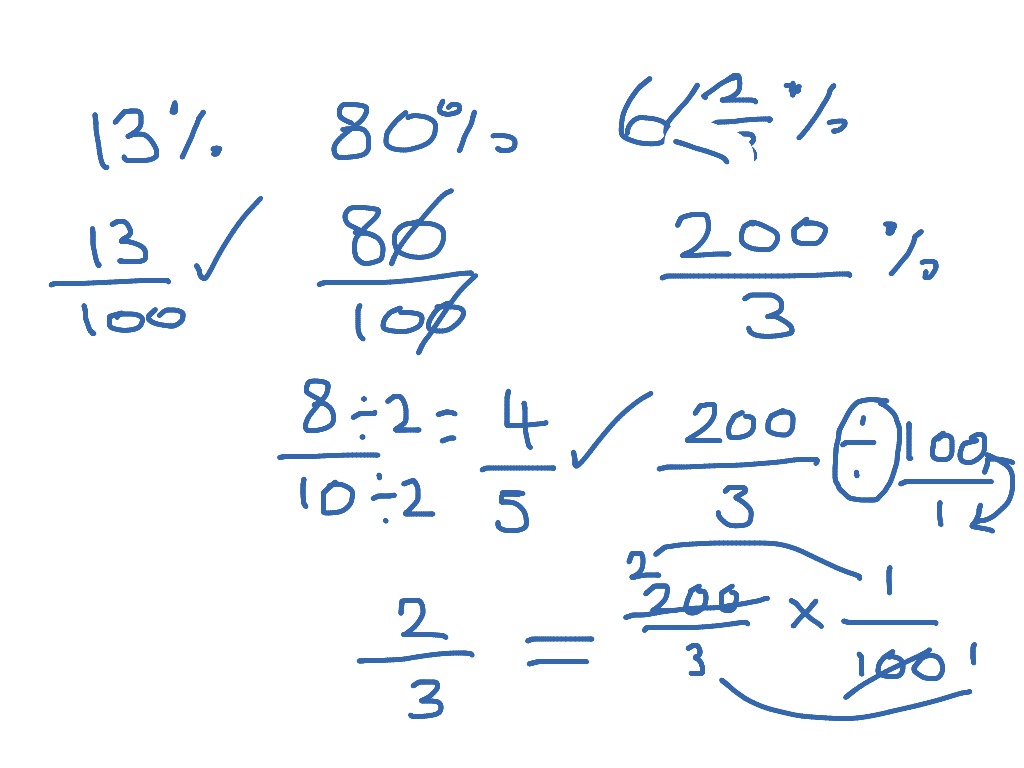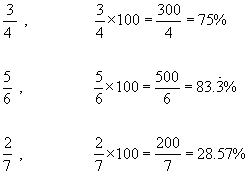

Use area and linear models of fractions, decimals, and percents to understand equivalence.

Compare, convert between and order fractions, decimals, and percents.

This lesson unit is intended to help students to:
FRACTIONS TO PERCENTAGES SIMPLIFIED DOWNLOAD
You can also download PowerPoint slides here.
FRACTIONS TO PERCENTAGES SIMPLIFIED FULL
This lesson is available through the Mathematics Assessment Project site.Īccess the full PDP lesson plan and photocopiable resources here. Students develop simple linear models for situations, make predictions based on these models, solve related equations and check their solutions. They assign ordered pairs to given points on the Cartesian plane and interpret and analyse graphs of relations from real data. Students use variables to represent arbitrary numbers and connect the laws and properties of number to algebra and substitute numbers into algebraic expressions. They make simple estimates to judge the reasonableness of results. Students compare the cost of items to make financial decisions, with and without the use of digital technology. They solve problems involving all four operations with fractions, decimals, percentages and their equivalences, and express fractions in their simplest form. They make the connections between whole numbers and index notation and the relationship between perfect squares and square roots. Students solve problems involving the order, addition and subtraction of integers. VCAA Mathematics glossary: A glossary compiled from subject-specific terminology found within the content descriptions of the Victorian Curriculum Mathematics. VCAA Sample Program: A set of sample programs covering the Victorian Curriculum Mathematics. That there are not 12 and a half wholes but rather 0.125 of a whole.Ĭonnect fractions, decimals and percentages and carry out simple Students may write 12.5 for the decimalĬonversion and seeing the visual representation supports them to understand Using a visual representation here can help students, especially if they haveĪlready seen the example for 12%. Into a decimal as students think they do not need to convert the number as it isĮg Convert 12.5% to a fraction and decimal Visual representations can be used to show the connection between fractions, decimals and percentages.Ī common misconception often occurs when converting a decimal percentage For example, they may not make the connection that 12% means 12 parts out of 100. Students may have difficulty recognising that percent means one part of a whole. For example, using the following grid, write the shaded part as a fraction, decimal and Using visual representations to show how one number can be represented asĪ fraction, decimal and percentage is helpful to support student understandingĪbout converting between the three different number types. Or percentage and when comparing numbers to have them in the sameįor example, when comparing 4 5 and 0.68 convert both numbers to a decimal or both to a fraction to make comparison easier. Students are also supported in their understandingĪs to when certain numbers would be best represented as a fraction, decimal If you want to express this as a percentage, you would multiply the fraction by 100 and add the percent sign, giving you 25%.Ĭonverting a fraction to a percentage is a straightforward process that involves two steps: first, you need to calculate the decimal equivalent of the fraction, and then you need to multiply that decimal by 100 to get the percentage value.Students continue to build on their knowledge that numbers can be representedĪs fractions, decimals and percentages and learn skills to convert quantities This is a fraction representing the part of the whole pizza that you have taken. If you take two slices, you have taken 2/8, or 1/4, of the pizza. Percentages, on the other hand, are used to represent parts of a whole as a percentage of the total value.įor example, consider a pizza that has been divided into eight equal slices. Fractions are used to represent a part of a whole by expressing it as a ratio of two numbers: the numerator and the denominator.

Fractions and percentages are two of the most common ways to represent parts of a whole.


 0 kommentar(er)
0 kommentar(er)
